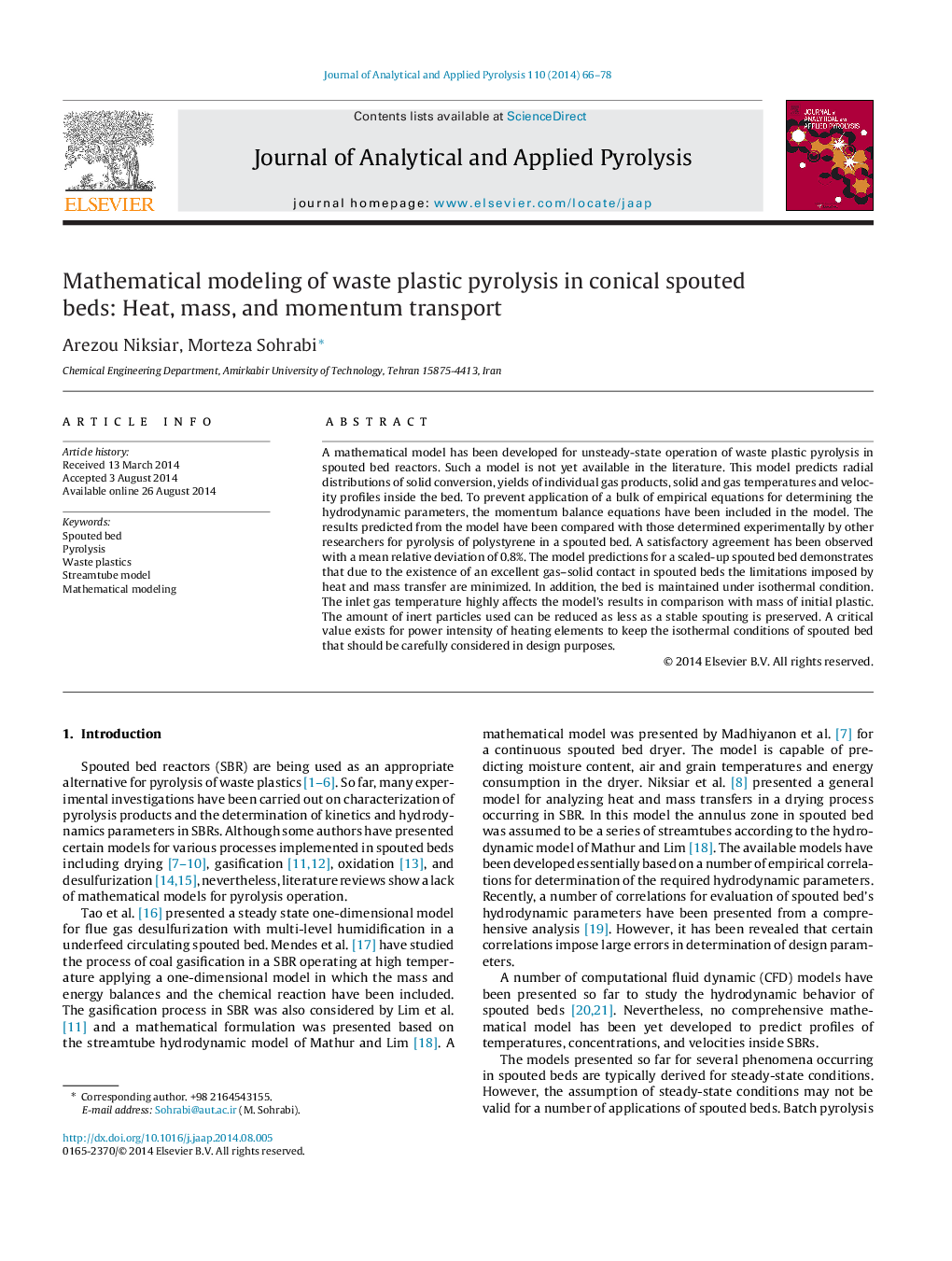| Article ID | Journal | Published Year | Pages | File Type |
|---|---|---|---|---|
| 1197291 | Journal of Analytical and Applied Pyrolysis | 2014 | 13 Pages |
•A new model is developed for waste plastic pyrolysis in spouted bed reactors.•The model predicts distributions of conversion, yield, temperature and velocity in bed.•The application of a bulk of empirical equations is prevented.•A satisfactory agreement is observed for model's results with the experimental data.•Even a large-scale spouted bed is maintained under isothermal condition.
A mathematical model has been developed for unsteady-state operation of waste plastic pyrolysis in spouted bed reactors. Such a model is not yet available in the literature. This model predicts radial distributions of solid conversion, yields of individual gas products, solid and gas temperatures and velocity profiles inside the bed. To prevent application of a bulk of empirical equations for determining the hydrodynamic parameters, the momentum balance equations have been included in the model. The results predicted from the model have been compared with those determined experimentally by other researchers for pyrolysis of polystyrene in a spouted bed. A satisfactory agreement has been observed with a mean relative deviation of 0.8%. The model predictions for a scaled-up spouted bed demonstrates that due to the existence of an excellent gas–solid contact in spouted beds the limitations imposed by heat and mass transfer are minimized. In addition, the bed is maintained under isothermal condition. The inlet gas temperature highly affects the model's results in comparison with mass of initial plastic. The amount of inert particles used can be reduced as less as a stable spouting is preserved. A critical value exists for power intensity of heating elements to keep the isothermal conditions of spouted bed that should be carefully considered in design purposes.
